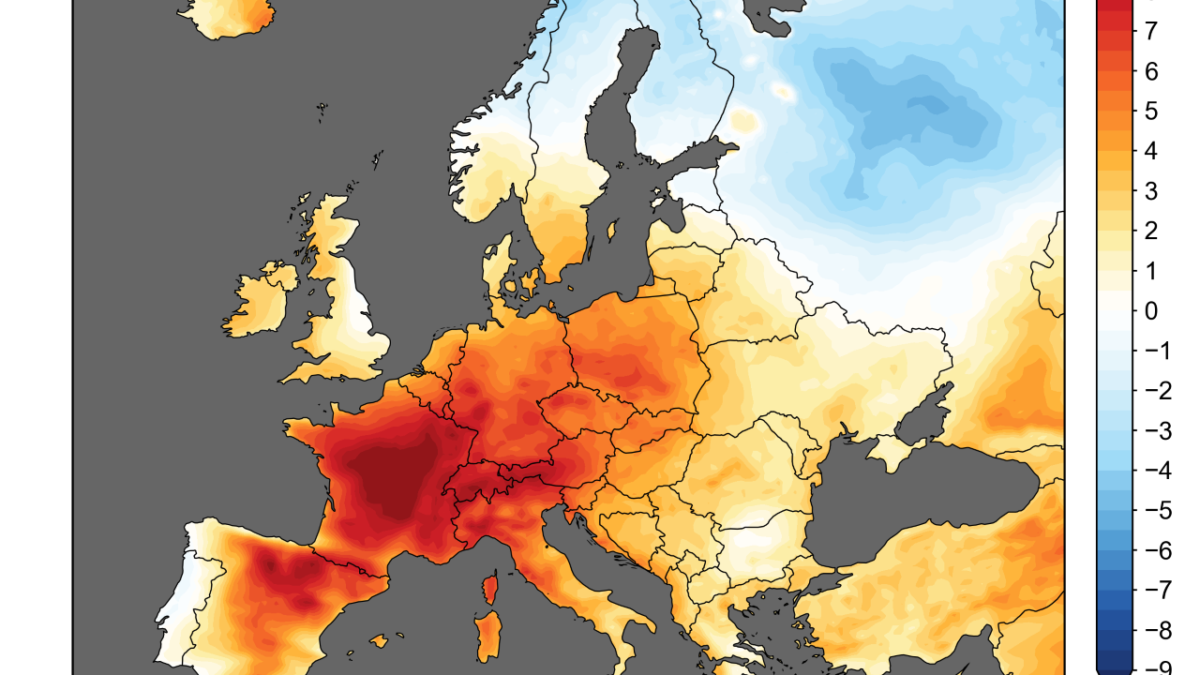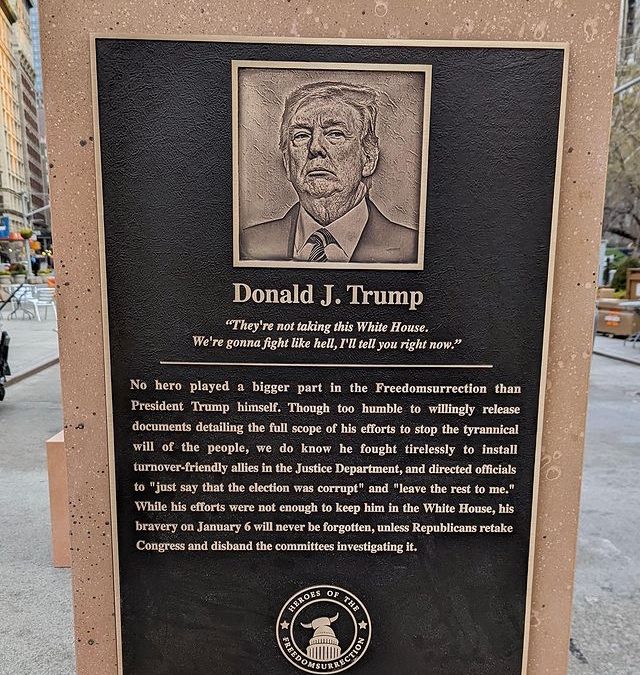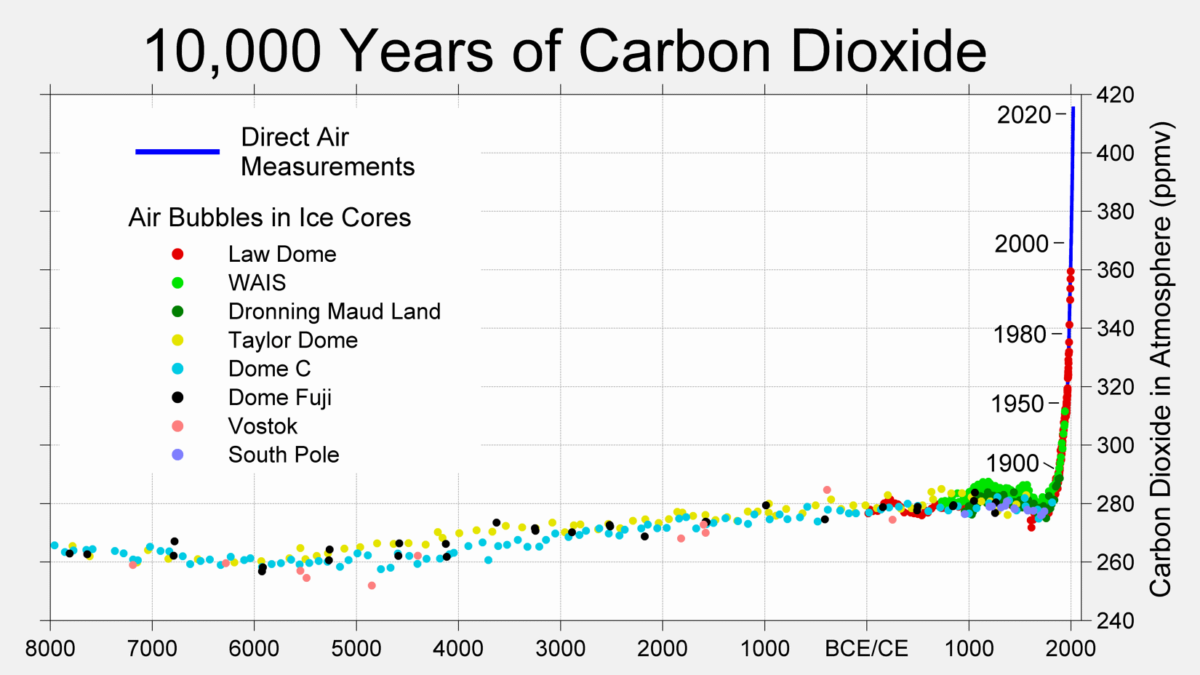Adani coal mine “unviable” without $4.4 billion in subsidies from Australia taxpayers – Mine will receive subsidies and tax concessions for more than 30 years – “This project is entirely contrary to Australia’s international commitments under the Paris Agreement”
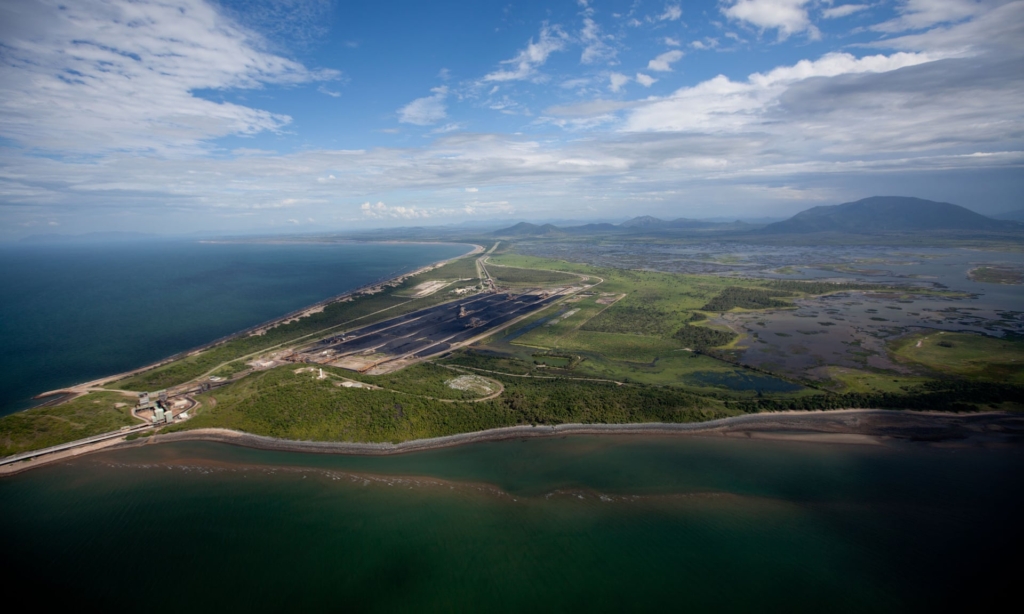
By Ben Smee
28 August 2019
(The Guardian) – Australian governments will give $4.4 billion in effective subsidies to Adani’s Carmichael coal project, which would otherwise be “unbankable and unviable”, a new analysis has found.
The report, by the Institute of Energy Economics and Financial Analysis, concluded that the project would benefit from several Australian taxpayer–funded arrangements – including subsidies, favourable deals and tax concessions – over its 30-year project life.
It said the project would be further supported by public handouts, tax breaks and special treatment provided to Adani Power, the proposed end-user of the thermal coal in India.
“If these subsidies were not being provided, Adani’s Carmichael thermal coal mine would be unbankable and unviable,” the report said.
“The subsidies have been provided in an effort to get Adani’s thermal coal mine up and operating for the sake of a handful of jobs and a bag of royalties, payable in a decade or so.”
In a detailed statement, Adani said the institute was “known for publishing alarmist papers that attempt to discredit the fossil fuel industry” and said the report “attempts to resurrect old and patently false and inaccurate claims suggesting the Carmichael project will only be viable because of a variety of government subsidies”.
The report argued that a royalties holiday deal, still under negotiation between the Queensland government and the Indian conglomerate, “equates to a huge capital subsidy with taxpayers footing the bill”. [more]
Adani mine would be ‘unviable’ without $4.4bn in subsidies, report finds
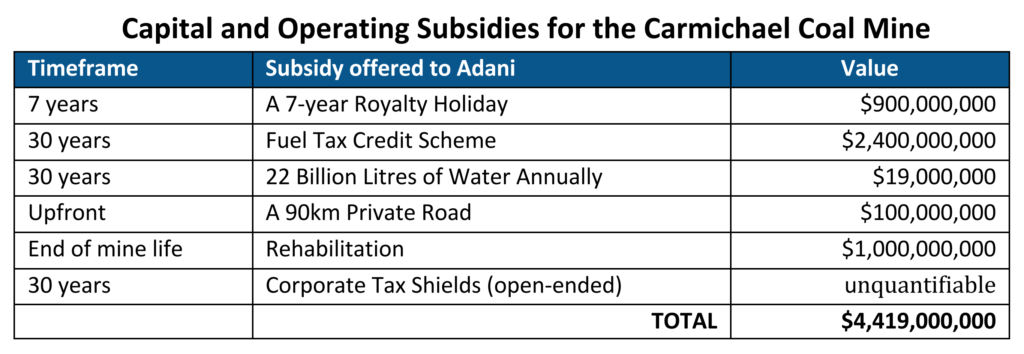
Australian taxpayers funding subsidies worth billions for Adani’s Carmichael thermal coal mine
29 August 2019 (IEEFA Australia) – After yet another three month extension, there is now just one month to go until Adani and Queensland Treasury sign off on a massive 900 million dollar 7-year low interest royalty capital subsidy for the Indian billionaire Adani Group – ensuring no royalty return from Carmichael into the Queensland community for a decade – IEEFA has a new briefing note out today highlighting Adani is attracting many billions of dollars in subsidies from the Australian, Queensland and Indian governments over the coming three decades.
When Adani announced they had been unable to attract international capital and so had to self-finance the Carmichael coal mine and rail proposal in late 2018, Chief Executive Officer Lucas Dow said they did not ‘require a cent of Australian taxpayer dollars’.
Despite this claim, the new IEEFA note, Billionaire Adani Being Subsidised for Carmichael Thermal Coal Mine – Adani’s Thermal Coal Mine in Queensland Will Never Stand on Its Own Two Feet, estimates that the Adani Group is set to receive over $4.4 billion of tax exemptions, deferrals and capital subsidies from Australian taxpayers to get its soon-to-be-obsolete Carmichael thermal coal mine up-and-running and operational for the next 30+ years.
Author Tim Buckley, Director of Energy Finance Studies IEEFA, says the Australian taxpayer is set to be drained of billions of dollars that could instead be used to assist people into secure long-term employment and in strengthening regional communities, while funding the inevitable transition to low emission energy alternatives.
“Actions speak louder than words. The Federal and Queensland governments have repeatedly stated the Adani mine is commercially viable and able to stand on its own two feet – while at the same time providing Adani with billions of taxpayer dollar in subsidies,” says Mr Buckley.
“Adani says it’s on track to receive a record high royalties deal from the Queensland government next month, despite Adani claiming it doesn’t need the money, and despite the Queensland government stating it would not provide any public money to the project.
“This project is entirely contrary to Australia’s international commitments under the Paris Agreement.
“Our government’s massive subsidies should instead be funnelled into projects that help prepare and transition Australia’s regional communities, and those which are likely to generate corporate taxes for Australia.
“The current global technology-driven disruption of the thermal coal industry is inevitable, so the Australian government has a choice to make it a planned transition, not the chaotic one that’s occuring and which involves billions in taxpayer dollars for obsolete thermal coal mines.
“IEEFA has concluded the Adani Carmichael thermal coal mine project would not open nor survive without billions of dollars in ongoing subsidies being provided by the Queensland and Australian governments over the coming three decades.”
As with most resource extraction arrangements, Adani must commit to pay a royalty to the state upon extracting Queensland’s thermal coal resources based on a percentage of the price per tonne exported.
The Australia Institute’s latest research shows that under existing arrangements, Adani is already effectively receiving 17% of their coal for free compared to royalty regimes in other states. Any deal agreed by 30 September will be additional to this existing subsidy.
“IEEFA recommends the 7-year royalty subsidy offer lapse,” says Buckley.
“Why should Australian taxpayers give billions of their hard-earned dollars to what is most likely already be a stranded asset?”
The briefing note review a number of subsidies and exemptions being awarded to Adani, including the 7-year royalty holiday, the fuel tax credit scheme, 22 billion litres of water annually, a 90km private road (Adani claims we are wrong on this one), final void rehabilitation exemptions, and corporate tax shields. (See table below)
IEEFA acknowledges the Carmichael proposal is not alone in accessing Australia’s diesel fuel subsidy.
“That Australian taxpayers have to shoulder high and increasing personal taxes at a time when the predominantly foreign-owned coal industry is continuing to access a billion-dollar annual diesel fuel subsidy is simply wrong,” says Buckley.
“IEEFA would contend the coal industry should be weaned off this diesel rebate. Fifty years of subsidies should be long enough for this sector to get to viability absent taxpayer support.”
For global warming to have any chance of being limited to under 2°C, the International Energy Agency and global investors both state that thermal coal globally must enter a slow but terminal decline.
Thermal coal pipelines are shrinking in most of Australia’s key export markets.
While India still offers great hope to thermal coal lobbyists, the Indian government’s Central Electricity Authority’s (CEA) energy plan has already modelled a one-third reduction in Indian coal imports by 2024, shifting to a more balanced reliance on domestic renewables and domestic sourced coal-fired power generation.
“Relying on India to pick up the slack when renewable energy tariffs there are already half the price of new import coal-fired power proposals is simply illogical,” says Buckley.
“The Indian government has identified the need to reduce its exposure to imported fossil fuels including oil, coal and gas, setting the stage for a massive transformation across the country.
“India has pivoted from building massive thermal power capacity to building lower cost renewable energy capacity at an unexpected rate. It has also established world-leading ambitions to reach 523 gigawatts of renewable energy installs by 2030, supported by 34 gigawatts of battery installs for grid firming.”
“Australia’s thermal coal export markets are leaping ahead of Australia in their direct embracing of the renewable energy race, driven by the need to address growing air pollution issues, rising water scarcity constraints, the energy security needs of increasing domestic reliance, and the straight-out economic merits of least cost renewables.
“It’s time for Australia to take a lesson from our neighbours.
“Low emission industries of the future are where the Australian government should be investing taxpayer money, not in the Carmichael mine – an expensive, obsolete thermal coal mine operation with financials requiring ongoing taxpayer handouts.”
